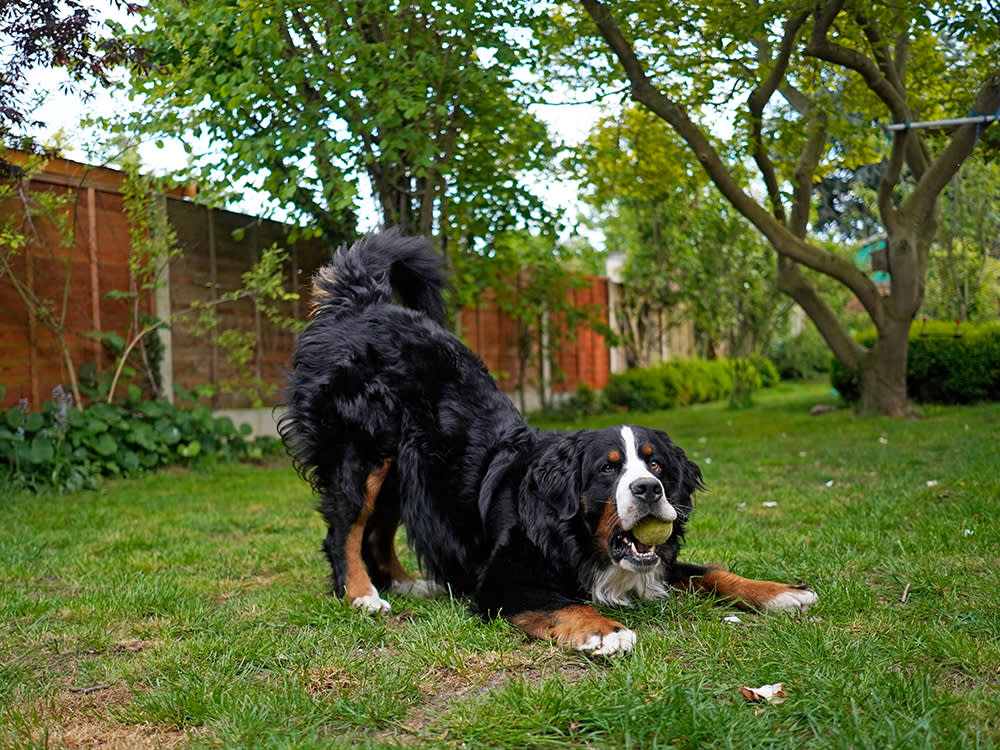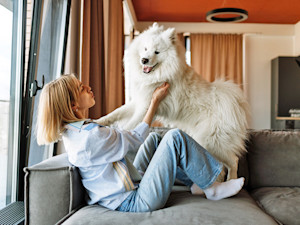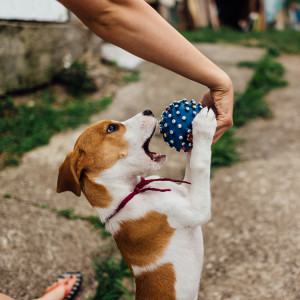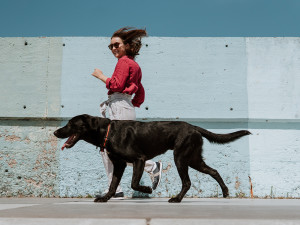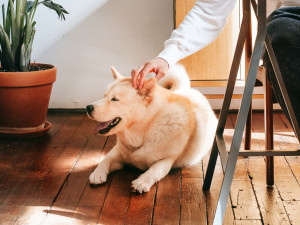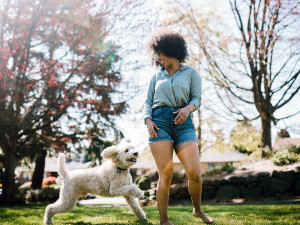Play Bows: the Universal Dog Signal That You’re Never Leaving the Park
Bow down, puppers. It’s time to play.
You’re at the dog park with your dog. You’ve got 15 minutes before a Zoom meeting, and you still have to make it back to the house. Then, you see them. Another dog and their owner have entered the dog run. Your dog sees them, too. They immediately get into position: the play-bow. You’re going to be late for that meeting.
When dogs want to play, they let others know with play signals, like a play-bow, which they use to initiate play with other dogs — and to keep it going. These signals can mean different things, but the message always aims to keep play safe by telling other dogs that their intentions are playful. A play signal tells another dog, “I want to play.” If you want to build a stronger bond with your pup, consider communicating in ways that naturally make sense to them, such as a play-bow.
Science of Play Signals
Behaviorist Patricia McConnell, author of Play Together, Stay Together, has observed that when it comes to dogs and people, “play isn’t what makes our relationship with each other better, play is what creates the relationship in the first place.” A 2020 Bristol University survey found that most of the 4,000 respondents simply didn’t spend enough time playing with their dogs. The UK-based study also found a clear link between “limited playtime and animal behavior problems, such as being nervous when left alone, disobedience and snapping at other animals.”
Others have taken note of the role of play in our dogs’ lives as well. Marc Bekoff, one of the leading scientists of animal play, has said, “We train too much and play too little...Whenever you are playing together, you and your dog learn the most important rules of social interaction: mutual trust, accepting the limitations of the other individual, and dealing fairly with each other.”
How much do you spend on your pet per year?
Play is also the perfect opportunity for shared joy between pet and pet parent. As Mechtild Käufer, author of Canine Play Behavior, writes, during play, you and your dog experience “moments in which two species — human and dog — really become one.”
Translating Dog Play-Bows
A dog play-bow is a play signal that dogs use to initiate play with other dogs and signal to others that their intentions are playful. Play-bows communicate that even if the behavior to follow is rough or learned from other instincts — such as fighting or predation — and involves biting, chasing, shaking, or slamming into one another, it is playful in nature. There is no intent to cause harm. Using play signals to communicate makes it less likely that a dog’s actions will be misinterpreted, which can cause play to escalate into aggression.
So, how does all this research and insight play out (no pun intended) in real life? Though the play-bow is a universal invitation to play among dogs, people can do it, too. A pet parent can imitate this action by getting down on all fours, putting both elbows on the ground, and leaving your butt in the air. Dogs usually perform play-bows in a springy, fast motion with a bounciness to it. If you want your play-bow to be as well-received as possible, try to mimic that springiness versus calmly moving into the posture like you are doing flow yoga.
A modified play-bow for people is possible, too, and it’s a little easier because you can remain standing. All you have to do is lean over from the hips, bend both legs, and spread your arms out at a 45-degree angle. To appear most playful to the dog receiving this signal, go into the pose quickly, perhaps even doing a little jump to go into the pose. Then, do something playful, like run away from your dog to start a chase game.
Bonds Grow During Play
Performing a play-bow makes dogs happy because there is no confusion — they already know what it means. Here are some other ways that play signals can increase the bond with your dog.
Developing trust
Play develops trust and increases the degree and amount of attention your dog will pay to you. This is especially true if you let your dog occasionally win, even when playing tug. They call it “play” because it’s not goal-oriented. Try not to focus on winning ribbons or breaking records — in that case, it’s more like work, and the positive aspects disappear.
Joining the pack
It’s well known that dogs will play longer with humans than with other dogs; they’re also less competitive and will present and surrender toys to humans more frequently. Even dogs in multi-dog households are more (rather than less) interested in playing with humans.
Encouraging better communication
Play signals also develop communication. To get your dog’s attention, hold a toy out in front of you, slap both hands on the ground, play-bow or make a quick forward movement. Play signals given by humans are more likely to elicit a response when accompanied by play vocalizations.
Improving obedience
Dogs who frequently play rough-and-tumble games with their humans have fewer problems with separation anxiety and are more self-confident. Not only that, but they score higher in “obedient attentiveness” after play sessions than before the sessions, according to researchers Nicola Rooney and John Bradshaw, which suggests that training after play can be highly effective.
Let the games begin!
